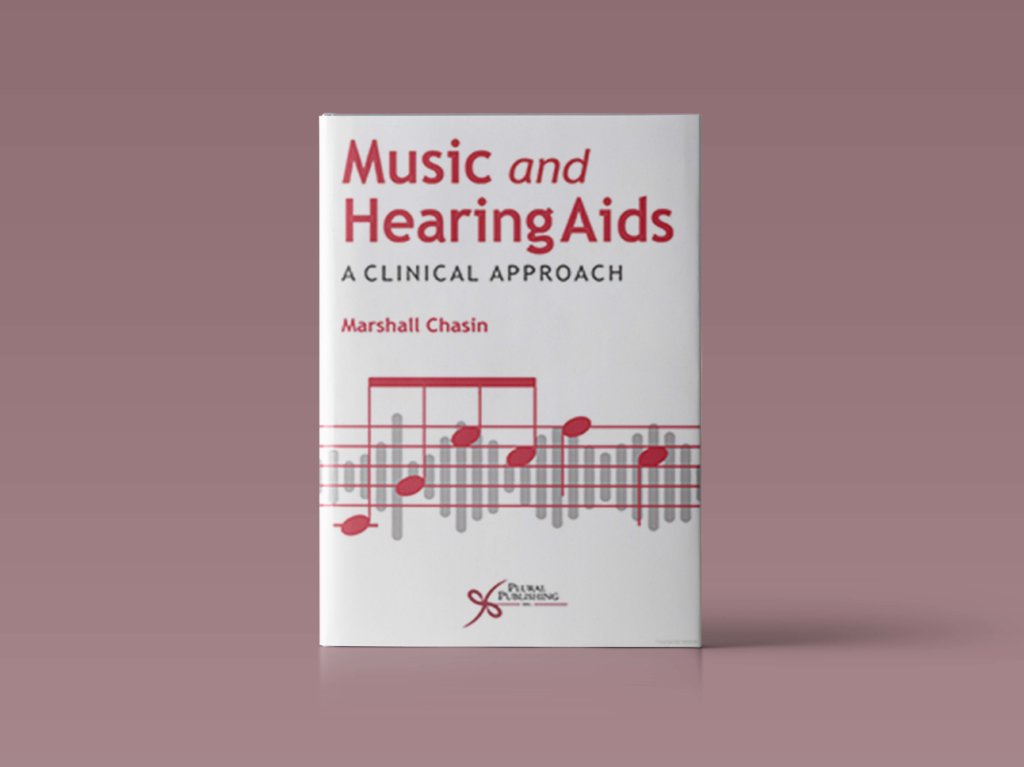Book Review
Music and Hearing Aids: A Clinical Approach

Reviewed by Ian O’Brien, PhD
Research Audiologist, Audeara
Principal Musician, The Queensland Symphony Orchestra
I hold Canadian audiologist Marshall Chasin, at least partly responsible for my discovery of audiology. Many years ago (while trying to figure out what the ringing in my ears was all about), I devoured his first book Musicians and the Prevention of Hearing Loss while sitting in the library stacks. I was immediately hooked by the conversational style, insight, and clear explanation of some pretty tricky topics. It was also the only book dedicated to musicians and hearing. It’s telling that the only substantial books on this subject since then have all been written by Chasin.
Music and Hearing Aids: A Clinical Approach, adds to his long-running series dealing with the various aspects of music, musicians, and hearing. This time around, the work is directed primarily at audiologists looking to improve the music experience for their clients, be they musicians or those who simply enjoy music.
Chasin covers the basics in the opening chapters, with a refresher on the acoustic properties of various instrument families and the primary dynamic and spectral differences between speech and music signals. Accompanied by easy-to-access online sound files, revised while clarifying a few questions along the way. Chasin’s insight here is informed by both experience and experimentation, although a more robust scientific examination of some of the topics would have been welcome. This is especially the case regarding the timbral changes to instruments over their dynamic range, with the very small sample sizes insufficient to account for important variables such as instrument design and player quality.
Despite this, these introductory chapters prepare the reader well for a more in-depth exploration of the limitations of hearing aids when dealing with both live and recorded music signals and the impact of speech-specific tools such as dynamic range compression and frequency compression/lowering on musical signals. This is followed by a series of practical clinical tips and tools that can be trialed by audiologists. This is where Chasin is at his strongest, with decades of clinical experience to call on.
Music and Hearing Aids concludes by stepping through a series of practical thoughts and ideas for technology developers to address some of the more critical failings of today’s hearing technology. The final words come in the form of requests by musicians with hearing aids – some of these echo requests are heard in clinics across the world, while others give insight to more specific problems, such as allowing more detailed programming options for musicians or enabling connections with recording and music production software.
Throughout the book, Chasin addresses the frustrating general lack of published research in this field with pointed calls for further research. In fact, he details no fewer than 12 projects that could occupy keen postgraduates looking for practical, real-world topics, from identification and amplification around cochlear dead regions through to fitting formulae for specific music genres.
The Music Focus in Clinical Practice
Music is a fantastic, visceral, indefinable, and integral to our communication. As audiologists, an important part of our communication specialists role is ensuring those with hearing difficulties can continue to enjoy and make music despite their hearing loss. Despite this, hearing aid manufacturers have been rather slow in tackling issues relating to music amplification. Some of the hardware and firmware central to today’s hearing devices are simply not up to the task of managing the extended dynamic range and spectral response required to faithfully reproduce music in high fidelity, let alone amplify it with bespoke algorithms. Chasin’s latest work calls this out, offering clinicians practical solutions where they exist and encouraging researchers and manufacturers alike to lift their game.
Overall, I would have liked to have seen further details on the subjects presented in Music and Hearing Aids, and perhaps a discussion around the quickly developing technology associated with the burgeoning ‘over-the-counter’ market in the US. This is especially topical with the current merging of true wireless stereo earbuds with hearing devices and how that may play into this field, but I guess every good show should end with the audience wanting more… I recommend this book for all audiologists and look forward to Chasin’s next installment.
Available from PluralPublishing.com
Reprinted with permission of Audiology Australia.

